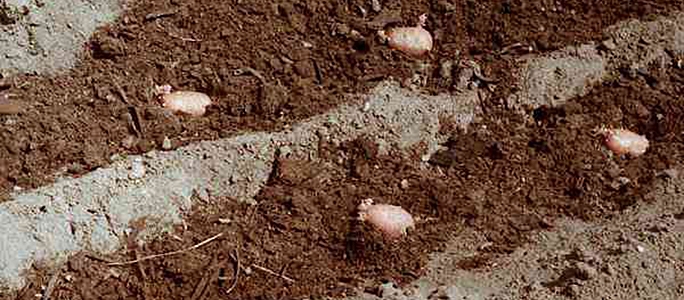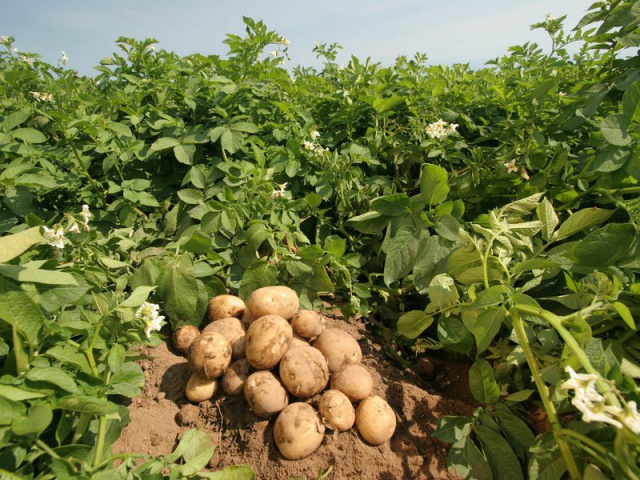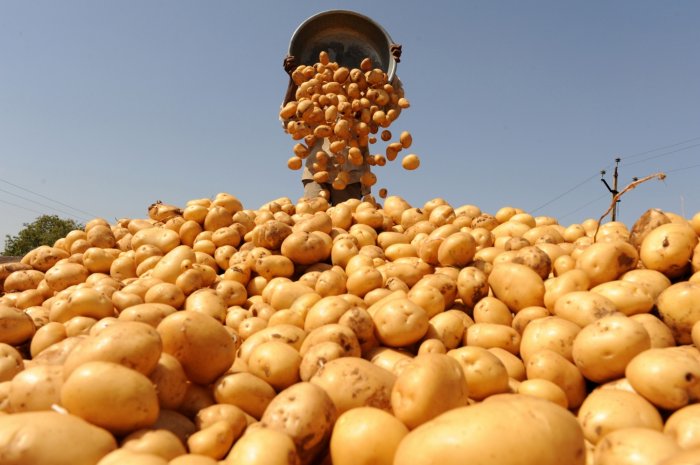What fertilizers to apply when planting potatoes in a hole
Content
Factors affecting yield
It takes some effort to get a great potato crop. Although many inexperienced gardeners believe that the potato is a perennial vegetable crop, it is actually an annual plant. In this case, the tuber of the root crop is a continuation of the stem, and not its root. The eyes, which are located on the surface of the potato tuber, are peculiar growth points. About 4 - 8 stems can grow from one tuber, on which new tubers appear a little later.
Potatoes are a vegetable crop for which the condition of the soil is very important. It is in order to prepare the soil as best as possible that it should be made loose and light. According to experts, medium loamy and sandy loam soils are best suited for planting root crops. What kind of soil should not be used for growing potatoes? These are bog-peat and sandy lands.
An important factor that can affect the yield is also the airiness of the soil. In order to provide him with this, gardeners periodically loosen him during the period of growth of culture. The destruction of the resulting crust provides an excellent opportunity to keep the earth moist, since after such a manipulation, evaporation can be reduced several times.
Potatoes should be planted in open, sunny areas. If you do this in a tree-shaded garden, the stems can quickly turn yellow. Irrigation plays a special role in increasing the yield. During the growing season, the required amount of liquid per one hundred square meters of the plot is about 35 - 45 cubic meters. Normal watering is especially important at a time when buds appear on vegetable crops, as well as during the flowering period. In order to prevent the appearance of such a dangerous ailment as scab, you should carefully water the potatoes, especially on dry days. Immediately after flowering, on the contrary, less water is required so that the tubers do not start to rot. Experts advise planting potatoes according to the timing of their ripening - today there are types of vegetable crops that have an early, mid and late ripening period.
An important role is played by the timely application of the necessary fertilizers during planting and after harvesting, which we will discuss in more detail a little later.
Video "The Secret of Planting Potatoes"
Fertilizer selection
It is important for every gardener to know which fertilizers should be applied directly to the hole. Experience shows that the best fertilizers are ash, bone meal, rotted manure, peat-manure compost, urea, ammonium nitrate, granular superphosphate, as well as a number of complex mineral fertilizers of complex composition, such as potato Kemira, nitrophoska. If potatoes are planted in acidic soil, it is necessary to add phosphate rock together with superphosphate.According to the rules, any kind of fertilizer must be applied directly to the rows or holes in the recommended doses.

Ready-made mineral fertilizers for potatoes must be balanced and maximally adapted to all the needs of the vegetable crop. Thus, unilateral application of mineral fertilizers to the soil will not be able to fill the soil with all the necessary nutrients. It is very important to maintain a balance of minerals with trace elements, since, for example, too much nitrogen can lead to the fact that potatoes begin to grow intensively into the tops. Also, organic fertilizing can always improve the condition of the soil. The process of normal growth and harmonious development of the root crop depends very much on whether it is sufficiently moist, warmed up, airy.
Thus, the selected fertilizer is applied during planting directly into the hole. For example, if you chose organic feeding, then in each of the prepared holes you need to put about 700 gram cans of dry humus and five tablespoons of ash (about a handful that can be placed in an adult's hand). And in the event that the gardener decides to use agrochemicals, about a tablespoon of nitrophoska and half a glass of bone meal should be added to the hole. It is also permissible to use purchased fertilizers - Kemira has proven herself well. This mineral dressing should be added to the wells in the amount indicated in the instructions.
How to fertilize

What fertilizer and in what quantities must be applied - much in this matter depends on how fertile the soil is for planting. An approximate calculation is as follows - for fertile soil, they take about 2.5 kg of compost and manure, 2.5 kg of superphosphate and one and a half kg of potash fertilizers. If the soil is of average fertility, it is customary to use no more than 3 kg of manure, the same kg of nitrogen fertilizers, 2.5 kg of potash and 4 kg of phosphorus fertilizers. If the soil is in a problem state, then it is necessary to take somewhere a centner of humus, add a kilogram of ammonium nitrate and 3 kg of superphosphate to it.
The main thing is not to overdo it with fertilizers, so as not to achieve, instead of improving, a deterioration in potato yields. Potassium must be applied especially carefully - after all, some of it is already present in the soil, therefore, only if it is used according to the instructions, it will be able to help the soil to better assimilate nitrogen and phosphorus.
Many experienced gardeners consider it important to put top dressing directly into the hole, since potato roots tend to develop only in the surface layer of the earth. Therefore, the amount of fertilizer used is small, and it immediately goes where it is needed. Manure can be used when planting only in the form of humus, so as not to harm the vegetable crop instead of benefit.
All top dressing should be applied to the soil strictly in the recommended dosage. If you apply top dressing along the ridge, then they can be on the surface, and in the fall you can see green tubers almost on the ground. This is because in the case of insufficient soil moisture or the presence of problem land, substances important for normal growth and development will remain shallow in the soil. And the first potatoes appear exactly closer to the roots, to which all the necessary substances simply do not get.
That is why today gardeners have adapted to use planters for planting potatoes, which have a convenient design with a fertilizer applicator. It doesn't take long and doesn't require undue effort on the part of the site owner. Thus, the roots will develop at the optimum depth for them very harmoniously.
Video "Potatoes, Ash and Fertilizers"
In the video, you will learn the most effective methods for feeding potatoes before planting in the holes.



